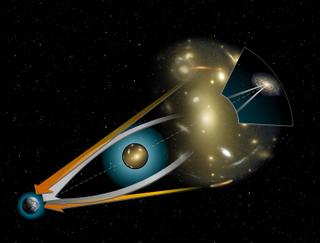Scientific Method
Friday, September 30, 2005
For you the visitor: Faith and the Scientific Method are two wholly different animals.As a Scientist, I can tell you that faith has no place in the workings of Science but that is NOT due to a rejection of anyone else's faith (never let anyone convince you that it is, it isnt, period) it is simply that faith is, by definition, untestable.
Science is about testing, describing, measuring, predicting, validating, confirming, extrapolating, faith is not.
Science can be seen as a road that can branch infinitely, with as many fascinating questions as the imagination can allow.
Faith is a single-point solution that has evolved to salve the suffering of the soul.
Please know the following: That the two are in conflict is a false problem served up to the masses so as to distract, energize the base, and focus political energies towards the crass ignoble goal of fortifying the ambitions of the religious hierarchy (nothing to do with God, how could it?)
Know that ye of faith are welcomed here with open minds because we are all in this together. We each have something to contribute in the evolution of our species.
How sad it would be if men allowed themselves to become mean irrelevant political pawns without chosing that path. If you chose it, own it, be it, but dont go there without understanding it.
Ok, with that I dispatch that sphere and wish to define Scientific Method and perhaps we can discuss it here, with open minds.
I suggest reading Wiki - Scientific Method(s).
I am going to pull quotes from that site and post here.
"The essential elements of a scientific method are iterations and recursions of the following four steps:
1. Characterization (Quantification, observation and measurement)
2. Hypothesis (a theoretical, hypothetical explanation of the observations and measurements)
3. Prediction (logical deduction from the hypothesis)
4. Experiment (test of all of the above)"
An example:
"Einstein's theory of General Relativity makes several specific predictions about the observable structure of space-time, such as a prediction that light bends in a gravitational field and that the amount of bending depends in a precise way on the strength of that gravitational field. Arthur Eddington's observations made during a 1919 solar eclipse supported General Relativity rather than Newtonian gravitation." See graphic below.

(click image to view larger version)
On the Science of the Method of Science, there is much MUCH scholarly thought and argument. I will put out these three diagrams for consideration and perhaps further discuss later.

(click image to view larger version)
"The first shows a model of the sort associated with the work of Karl Popper, whereby each theory subsumes the information of previous theories completely. The second is one following from the work of Thomas Kuhn, where paradigms shift from one to another, rejecting some parts of the previous and subsuming some older parts to their new way of thinking. The third is an attempt (perhaps poor) to outline the chaos described by Paul Feyerabend, based in part on a graphic he included in his book Against Method, showing theories only partially related to previous theories if at all (the overlapping areas of the earlier theories are only the parts which could be "warped" and "distorted" to fit into the new theory) and are unbounded and incoherently defined. Somewhere in between these three models one can fit most other models of scientific theory change; they do a good job rhetorically at illustrating the various extremes."
3:46 PM :: 0 comments
Post a Comment
nika :: permalink
>0 Comments:
Post a Comment
<< Home
nika :: permalink

